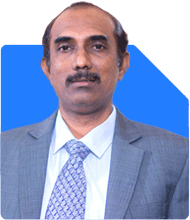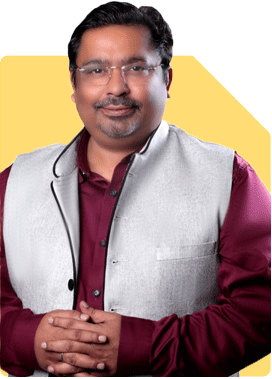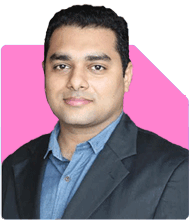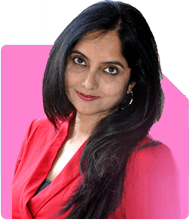Ramalingam Kalirajan |10870 Answers |Ask -Follow
Mutual Funds, Financial Planning Expert - Answered on May 16, 2024
He has an MBA in finance from the University of Madras and is a certified financial planner.
He is the director and chief financial planner at Holistic Investment, a Chennai-based firm that offers financial planning and wealth management advice.... more

I am 47 years old and investing in multiple mutual funds via Sips, few of my funds are Quant mid cap, bank of India manufacturing and infrastructure, quant value, Invesco India infrastructure, Edelweiss flexi cap, union small cap, Helios flexi cap, quant small cap, kotak infrastructure and economic, Nippon India small cap, kotak small cap, kotak blue chip, axis nifty 50 index, hdfc flexi cap, icici prudential technology and few more, are all these funds good to give good returns, shall I stay invested in this or change, please advise soon
Reviewing Your Mutual Fund Portfolio
Your portfolio comprises a diverse range of funds across various categories and sectors, reflecting a well-rounded investment strategy. However, it's crucial to evaluate each fund's performance and suitability for your financial goals.
Analyzing Fund Selection
Active vs. Index Funds: Active funds like the ones you've invested in have the potential to outperform the market by leveraging fund managers' expertise and research. However, index funds offer lower costs and may be more suitable for passive investors.
Sector Funds vs. Diversified Funds: Sector funds, such as technology or infrastructure funds, focus on specific industries, offering potential for higher returns but also carrying higher sector-specific risks compared to diversified funds.
Identifying Potential Challenges
Overlapping Holdings: Review your portfolio for overlapping holdings across multiple funds, which can lead to concentration risk and compromise diversification benefits.
Expense Ratio: Assess the expense ratio of each fund, as higher expenses can erode returns over time, especially in actively managed funds.
Evaluating Performance
Fund Performance: Evaluate the historical performance of each fund relative to its benchmark and peers. Look for consistency in returns and fund manager track record.
Risk Management: Consider the risk profile of each fund and ensure it aligns with your risk tolerance and investment horizon.
Recommendations for Portfolio Optimization
Consolidation: Consider consolidating your portfolio by pruning underperforming or overlapping funds to streamline your investments and enhance portfolio efficiency.
Focus on Quality: Prioritize funds with strong fundamentals, experienced fund managers, and consistent performance over the long term.
Diversification: Maintain a balanced asset allocation across different fund categories to mitigate risk and capture opportunities in various market conditions.
Addressing Sector Exposure
Diversification Strategy: While sector funds offer potential for high returns, they also carry concentrated sector-specific risks. Consider reallocating some investments from sector funds to diversified funds to enhance portfolio diversification.
Conclusion
While your current mutual fund portfolio demonstrates diversification and investment discipline, it's essential to periodically review and adjust your investments to align with your financial goals and market conditions. Consider consulting with a Certified Financial Planner for personalized advice tailored to your needs and objectives.
Best Regards,
K. Ramalingam, MBA, CFP,
Chief Financial Planner,
www.holisticinvestment.i
You may like to see similar questions and answers below
Omkeshwar Singh | Answer |Ask -Follow
Head, Rank MF - Answered on Nov 29, 2019
Ramalingam Kalirajan |10870 Answers |Ask -Follow
Mutual Funds, Financial Planning Expert - Answered on Jul 22, 2024
Ramalingam Kalirajan |10870 Answers |Ask -Follow
Mutual Funds, Financial Planning Expert - Answered on May 26, 2025
Dr Dipankar Dutta |1837 Answers |Ask -Follow
Tech Careers and Skill Development Expert - Answered on Dec 05, 2025
Dr Shyam Jamalabad |108 Answers |Ask -Follow
Dentist - Answered on Dec 05, 2025
Dr Shyam Jamalabad |108 Answers |Ask -Follow
Dentist - Answered on Dec 05, 2025
Dr Shyam Jamalabad |108 Answers |Ask -Follow
Dentist - Answered on Dec 05, 2025
Dr Dipankar Dutta |1837 Answers |Ask -Follow
Tech Careers and Skill Development Expert - Answered on Dec 05, 2025
Ulhas Joshi |280 Answers |Ask -Follow
Mutual Fund Expert - Answered on Dec 05, 2025
Dr Dipankar Dutta |1837 Answers |Ask -Follow
Tech Careers and Skill Development Expert - Answered on Dec 04, 2025
Ravi Mittal |676 Answers |Ask -Follow
Dating, Relationships Expert - Answered on Dec 04, 2025
Anu Krishna |1745 Answers |Ask -Follow
Relationships Expert, Mind Coach - Answered on Dec 04, 2025
Anu Krishna |1745 Answers |Ask -Follow
Relationships Expert, Mind Coach - Answered on Dec 04, 2025


























